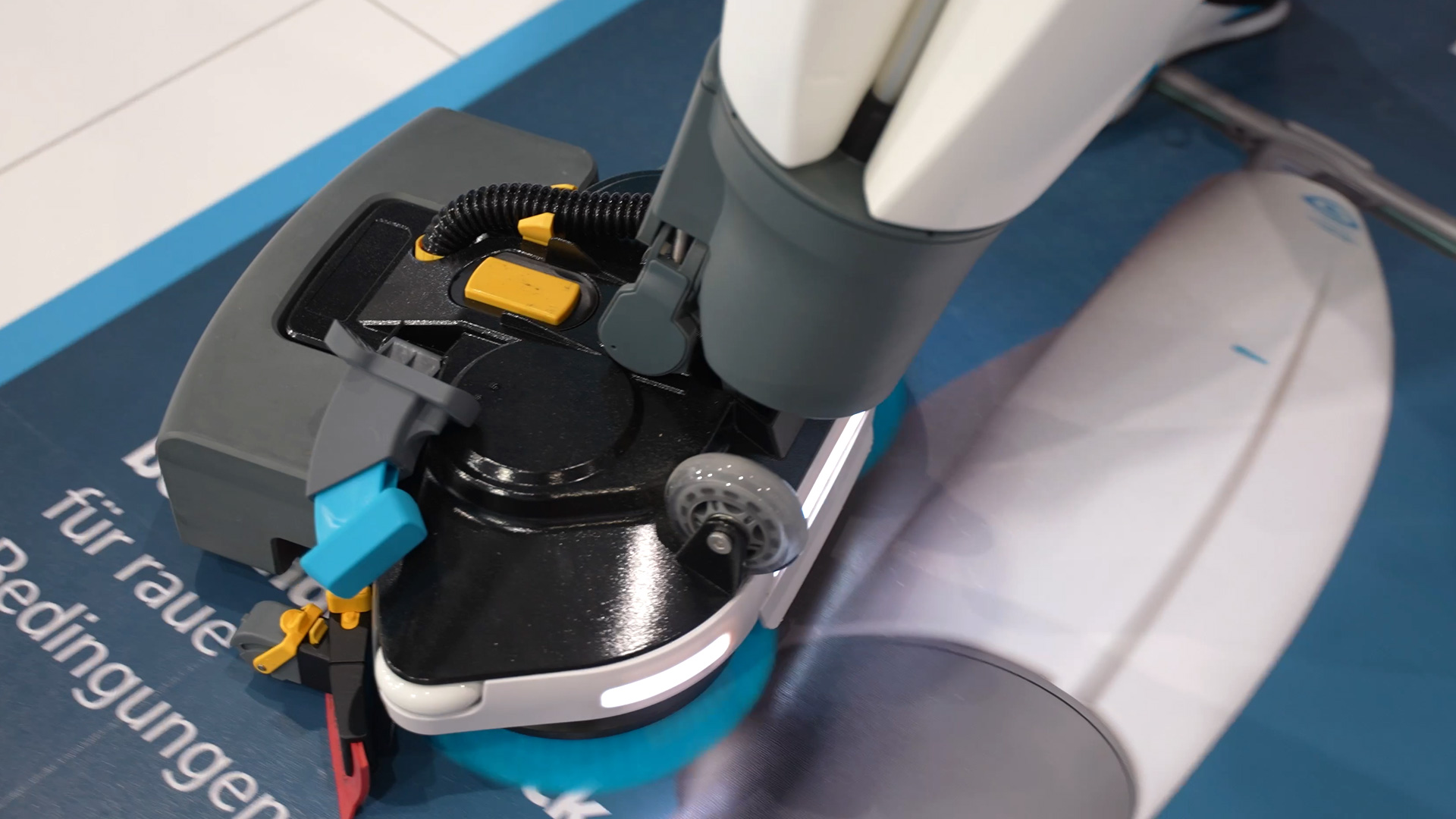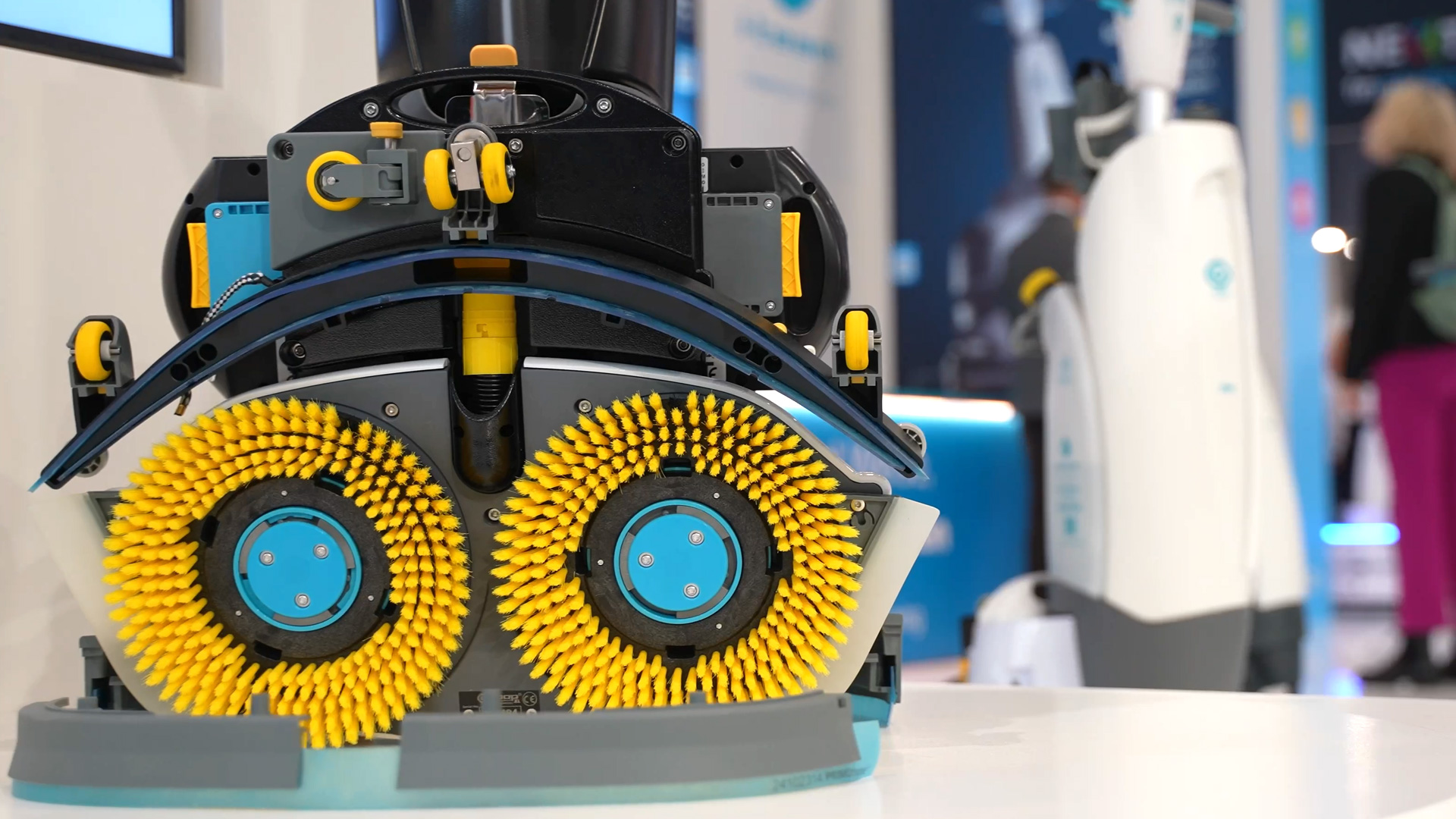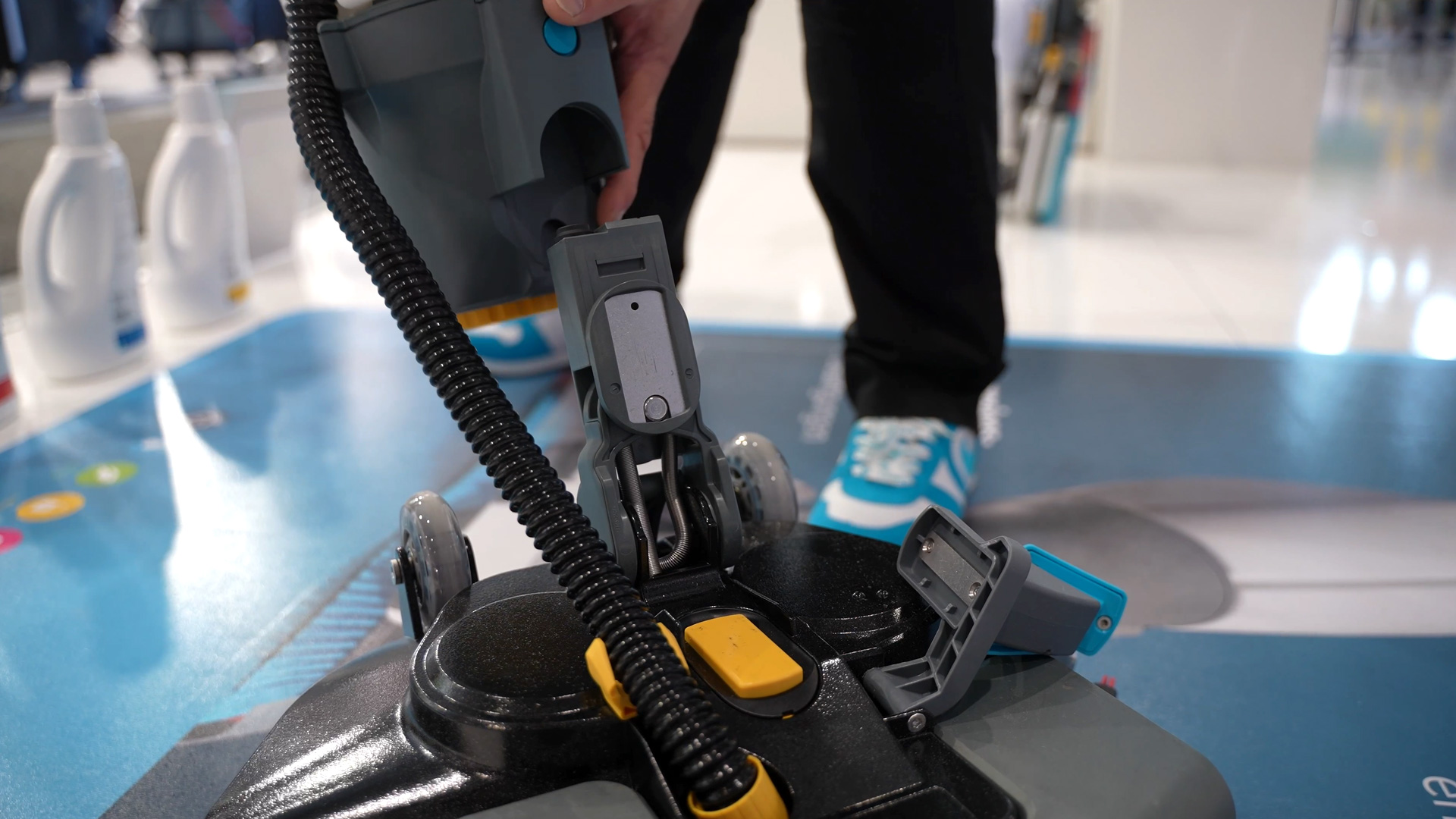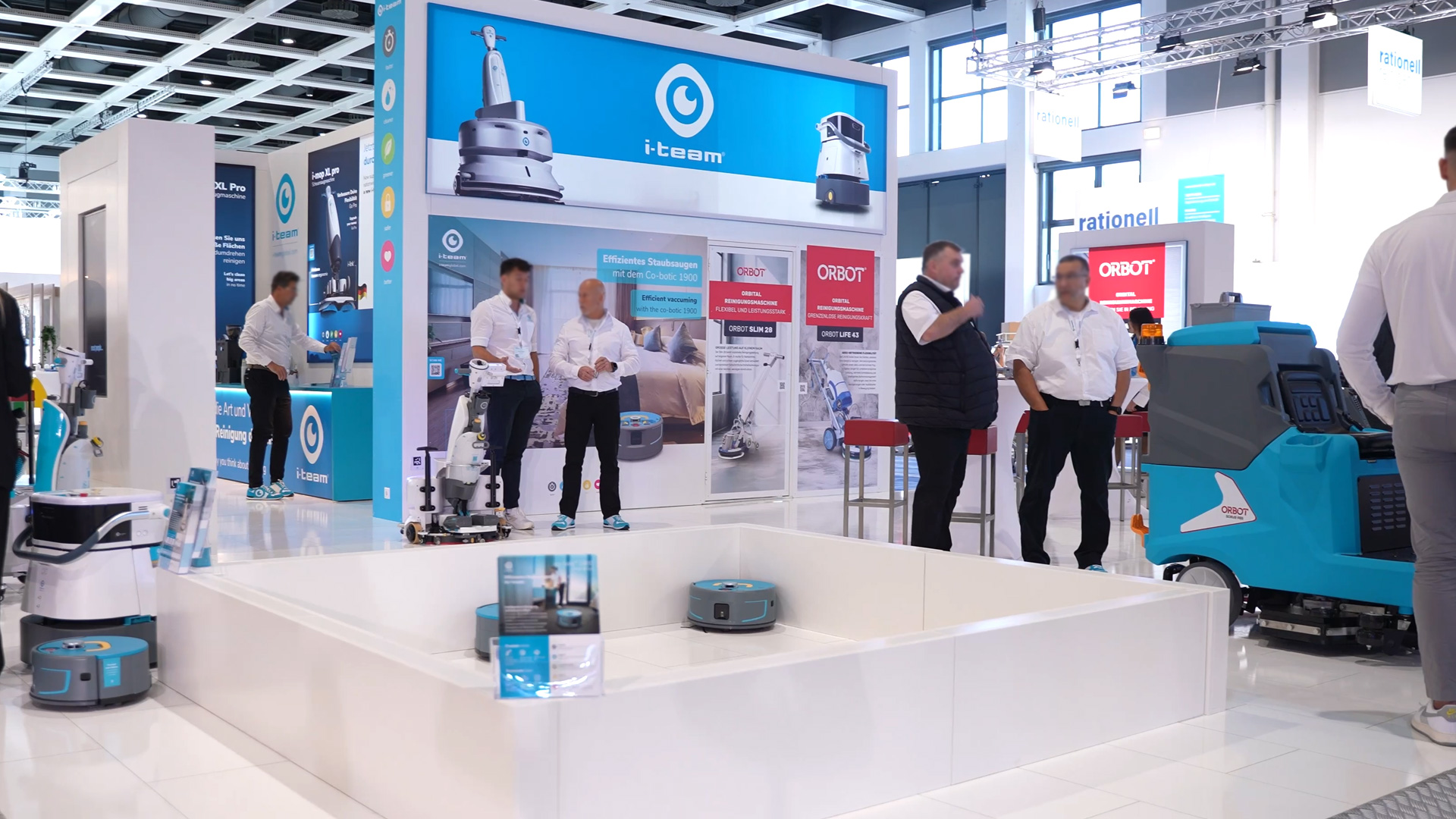The i-mop 40 Pro, the latest development in the well-known i-mop series, was presented at a trade fair. The machine combines improved cleaning results, sustainable construction, and digital networking. It is therefore aimed at both professional building service providers and companies that clean their own premises.
The i-mop series has been considered a pioneer in compact scrubber-dryers for years. The i-mop 40 Pro is a model that has been developed based on user feedback. Its key feature is its modular design: the deck and upper section can be replaced separately, which simplifies maintenance and spare parts management. This design extends the life cycle and reduces service costs.

A new feature is the integration of a networked fleet management system. Status data and usage statistics can be accessed in real time via the cloud. Service indicators report whether the battery, water supply, or other components need to be checked. For building cleaners with large fleets, this means fewer breakdowns, transparent planning, and precise control of resources.
Three requirements dominate in use: agility, ergonomic operation, and sustainability. The i-mop 40 Pro has been designed to remain easy to maneuver even in rooms with lots of corners. Smooth-running controls reduce strain on the operator and enable long periods of use without fatigue. Sustainability is reflected in reduced water and energy consumption as well as durable components. The machine thus meets modern standards for resource-efficient cleaning.

The manufacturer refers to users as “i-users.” These include both large service providers who clean hundreds of square meters of space every day and companies that maintain smaller areas with their own staff. The machine's maneuverability is particularly useful in areas with many obstacles, such as office buildings, schools, or healthcare facilities.

The i-mop 40 Pro not only represents the current state of the art, but also points the way to the future. Sensors for condition monitoring, networked data platforms, and artificial intelligence are increasingly becoming drivers of building cleaning.

Modularity creates the basis for gradually integrating such technologies. In the future, concepts such as cobotics and autonomous cleaning routines can be integrated into the system—an indication that the line between manual and robot-assisted cleaning is becoming increasingly blurred.